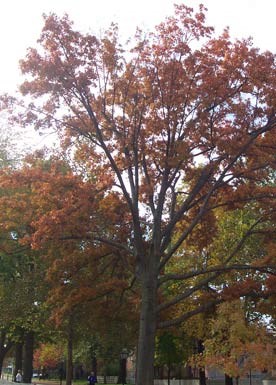
LIHO Trees and shrubs played an important role in establishing the appearance and character of Mr. Lincoln’s neighborhood. Most of the trees and shrubs on site were available during Mr. Lincoln’s residency, from 1844 – 1861. From the fragrant flowering mock orange (Philadelphus species) to the stately American elm (Ulmus americana) the restored 19th century neighborhood offers a reprieve from the busy 21st century urban environment that surrounds the site. Back in 1856, the people of Springfield passed a Tree Planting Ordinance to beautify their city streets and yards with trees, flowers, and shrubbery. Mr. Lincoln, like many of his neighbors, planted a shade tree in front of his home. Individual homeowners designed and planted gardens that were visually attractive as well as pragmatic. Evergreens like the American Yew (Taxus canadensis) served to shield outbuildings and backyards from public view. Crabapples and currants provided fruit and berries for jams and jellies. Lilacs and roses perfumed the air. Flowering shrubs like Rose of Sharon and Trumpet Creeper produced an abundance of blossoms and color throughout the seasons. Today, trees and shrubs in Lincoln Home form an island of greenery within the bustling city of Springfield. They serve as a buffer between the restored 19th century neighborhood and an active urban environment. The trees and shrubs provide fruit and berries for wildlife; habitats for insects, birds, and small animals; and a 19th century landscape for the city dweller. Visitors can request a physical copy of the Lincoln Home National Historic Site Tree Map at the Visitor Center front desk. Types of trees found in the 4 block historic area include: Amur Corktree, American Elm, Apple, Austrian Pine, Ash, Black Cherry, Black Gum, Blackhaw, Black Oak, Black Maple, Bur Oak, Catalpa, Crabapple, Flowering Dogwood, Elm, Hackberry, Honeylocust, Hawthorn, London Planetree, Sucer Magnolia, Red Mulberry, Norway Maple, Persimmon, Pin Oak, Red Maple, Northern Red Oak, Sweetgum, Silver Maple, Sugar Maple, Sycamore, Tree of Heaven, and Tulip Tree. 
|
Last updated: September 3, 2021
